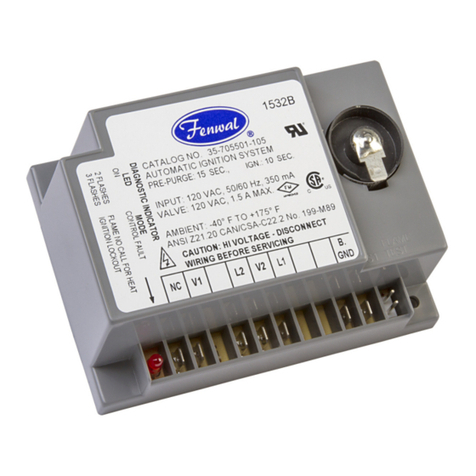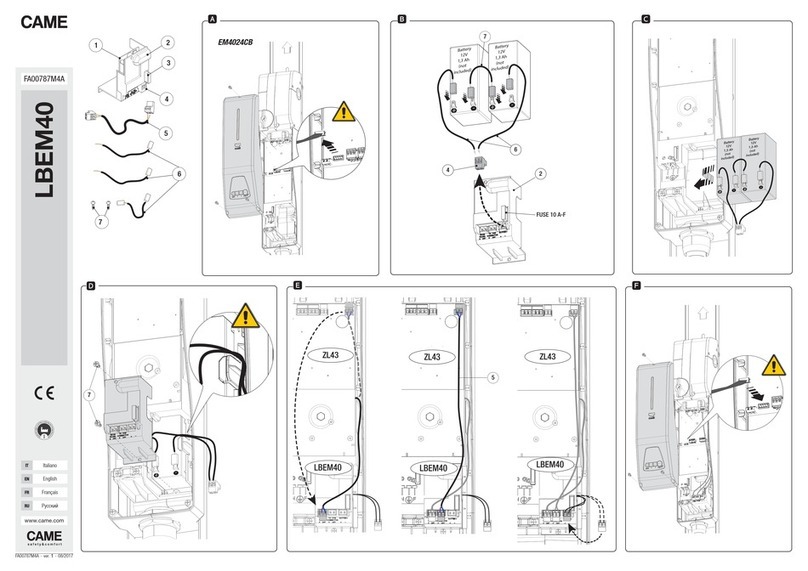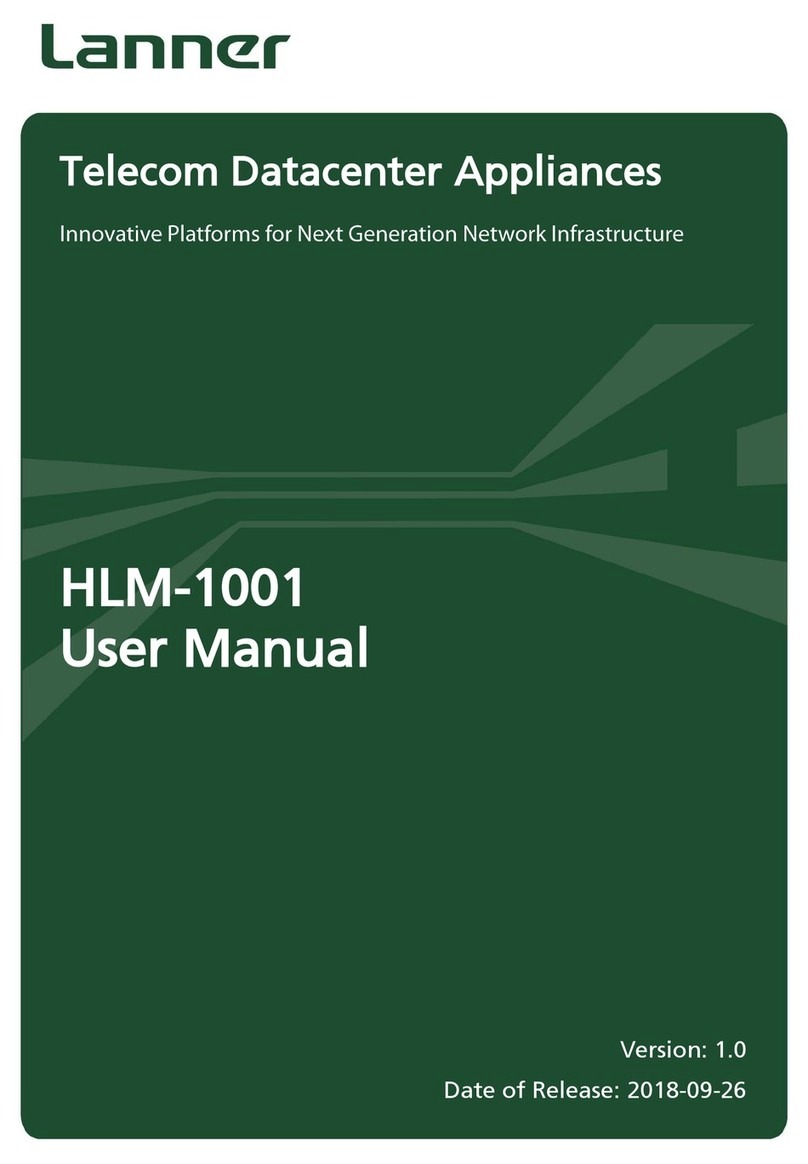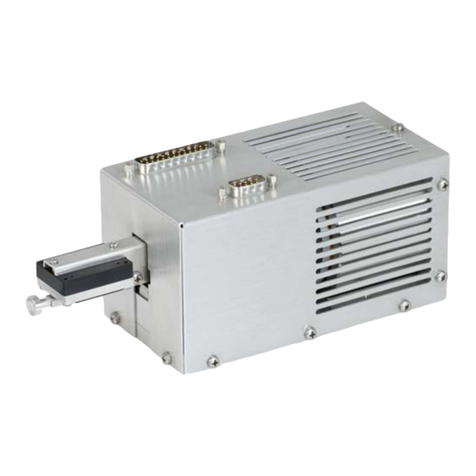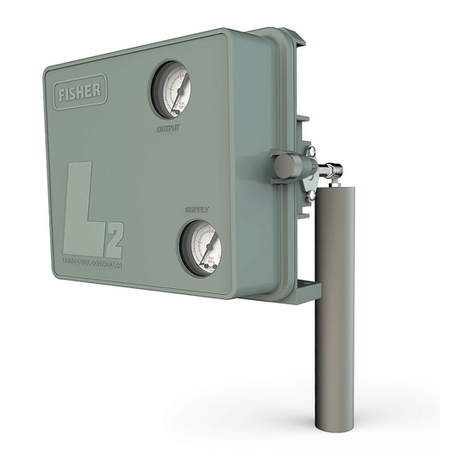Fenwal Controls Series 35-703 User manual

F-35-703
March 2020
1
FEATURES
• Safe start with DETECT-A-FLAME® flame sensing
technology
• Custom pre-purge and inter-purge timings
• Single or three trials for ignition
•System diagnostic LED
• Local or remote flame sensing
• Automatic reset
• Open board, potted or enclosure
APPLICATIONS
• Commercial cooking
•Gas furnaces
•Unit heaters
•Water heaters
• Other gas-fired appliances
DESCRIPTION
The 35-703 is a 120 VAC intermittent pilot (IP) control designed
for use in all types of gas-fired appliances. The control uses a
microprocessor circuit to provide precise, repeatable timing and
operating sequences. On-board diagnostics with LED output
makes troubleshooting easy and ensures safe and efficient
operation.
Export Information (USA)
Jurisdiction: EAR
ECCN: EAR99
Agency Certifications
SPECIFICATIONS
Recognized under the UL component program, UL
372. Software certified to ANSI/UL 1998. UL File
MH8817
Design Certified to ANSI Z21.20,
CAN/CSA C22.2 No. 199-M89
Input Power 102 to 138 VAC, 50/60 Hz
Input Current 350 mA @120 VAC with main and
pilot gas valve relays energized
(control only)
Main Gas Valve 1.5A max @ 120 VAC
Pilot Gas Valve 1.5A max @ 120 VAC
Operating Temperature -40°F to +160°F
(-40°C to +71°C)
Storage Temperature -40°F to +185°F
(-40°C to +85°C)
Flame Sensitivity 1.0 µA minimum
Flame Failure Response 0.8 seconds maximum
Flame Detector Self-check
Rate
Once per second minimum
Gas Types Natural, LP, or manufactured
Spark Rate:
Remote
Local
50/60 sparks/sec
25/30 sparks/sec
Size (LxWxH)
with enclosure
5.11 x 3.55 x 2.00 inches
(12.98 x 9.02 x 5.08 cm)
Moisture Resistance Conformal coated to operate non-
condensing to 95% R.H. Module
should not be exposed to water
Ingress Protection Not rated, protection provided by
appliance in which it is installed
Tries for Ignition One or three try versions available
Trial for Ignition Periods 15, 30, 60, 90 seconds available
Pre-purge and Inter-purge
Timings
0, 15, 30, 45 seconds or 4 minutes
available
SERIES 35-703
120 VAC Microprocessor-Based
Intermittent Pilot Ignition Control
R

Effective: March 2020
2 F-35-703
SEQUENCE OF OPERATION / FLAME
RECOVERY / SAFETY LOCKOUT
Start Up - Heat Mode
When a call for heat is received from the thermostat supplying
120VAC to L1, the control will reset, perform a self-check
routine, flash the diagnostic LED and begin a pre-purge delay.
Following the pre-purge period, the pilot gas valve is energized
and sparking commences for the Trial For Ignition (TFI) period.
When flame is detected during the TFI, the sparking process is
terminated and the main gas valve is energized. The thermostat
and pil ot bu rner flame are const an tl y m on itored to assure p roper
system operation. When the thermostat is satisfied and the
demand for heat ends, the pilot and main valves are immediately
de-energized.
Failure to Light - Lockout
SINGLE TRIAL MODEL
Should the pilot burner fail to light, or the pilot flame is not
detected during the TFI period, the pilot gas valve will de-
energize and the control will go into lockout. The LED will
indicate the fault code for ignition lockout.
MULTI TRIAL MODEL
Should the pilot burner fail to light or the pilot flame is not
detected during the TFI period, the pilot gas valve will de-
energize. The control will then go through an inter-purge delay
before an additional ignition attempt. The control attempts two
additional ignition trials before de-energizing the pilot gas valve
and entering lockout. The LED will indicate the fault code for
ignition lockout.
FLAME FAILURE - RE-IGNITION MODE
If the established pilot flame signal is lost while the burner is
operating, the control will respond within 0.8 seconds by de-
energizing the main gas valve and energizing the spark for the
TFI period in an attempt to relight the flame. If the burner does
not light within the TFI, the pilot gas valve will immediately de-
energize and single try models will enter lockout. On multi-try
models, a new TFI sequence will begin after an inter-purge
delay. Multi-try models perform two additional attempts to light
the burner before de-energizing the gas valves and entering
lockout. If the pilot burner relights, normal operation resumes.
FLAME FAILURE-RECYCLE MODE
With the “Recycle After Loss of Flame" option, upon loss of
flame, the pilot and main gas valves are de-energized and the
control proceeds to inter-purge before attempting to relight the
flame. Multi-try models permit three tries for ignition including
inter-purges. If the pilot burner relights, normal operation
resumes. If the pilot burner does not relight, the control will
enter lockout.
Lockout Recovery
Recovery from lockout requires a manual reset by either
resetting the thermostat, or removing 120 VAC for a period of 5
seconds. On models with automatic reset, if the thermostat is
still calling for heat after one hour, then the control will
automatically reset and attempt to ignite the burner.
MOUNTING AND WIRING
The Series 35-703 control is not position sensitive and can be
mounted vertically or horizontally. The control may be mounted
on any surface and fastened with #6 sheet metal screws. Secure
the control in an area that will experience a minimum of
vibration and remain below the maximum ambient temperature
of 160°F (71°C).
All connections should be made with UL Approved, 105°C rated,
18 gauge, stranded, .054” thick insulated wire. Refer to the
appropriate wiring diagram when connecting the 35-703 to
other components in the system.
CAUTION
All wiring must be performed in accordance with
both local and national electrical codes.
CAUTION
Label all wires prior to disconnection when
servicing controls. Wiring errors may cause
improper and dangerous operation. A functional
checkout of a replacement control should always
be performed.
WARNING
This product uses voltages of shock hazard
potential. Wiring and initial operation must be
performed by a qualified service technician.
WARNING
Operation outside specifications could result in
failure of the Fenwal Controls product and other
equipment with potential for injury to people and
property.
Terminal Designations
Terminal Description
Quick
Connect
(inch)
PV1 Pilot Valve Power 3/16”
L2 120 VAC (Neutral) 3/16”
L2 120 VAC (Neutral) 3/16”
V2 Valve Neutral 3/16”
L1 120 VAC Input (Hot) 1/4”
MV1 Main Valve Power 1/4”
B. GND Burner Ground 3/16”
S1 Remote Flame
Sensor 1/4”

Effective: March 2020
F-35-703 3
Wiring Diagrams - 35-703
Figure 1. Local Sense
Figure 2. Remote Sense
Internal Control Failure
If the control detects a software or hardware error, all outputs
are turned off and the LED displays a Steady On condition. If this
condition persists after an attempt to restart, then the control
must be replaced.
Proper Electrode Location
Proper location of electrode assembly is important for optimum
system performance. The electrode assembly should be located
so that the tips are inside the flame envelope and about 1/2-inch
(1.2 cm) above the base of the flame as shown:
Notes:
• Ceramic insulators must not be in or close to the flame.
• Electrode assemblies must not be adjusted or
disassembled. Electrodes are NOT field adjustable.
• Electrodes should have a gap spacing of 0.125± 0.031
in (3.12± 0.81 mm), unless otherwise specified by the
appliance manufacturer. If spacing is not correct, the
assembly must be replaced.
• Exceeding temperature limits can cause nuisance
lockouts and premature electrode failure.
• Electrodes must be located where they are not exposed
during normal operation.
TROUBLESHOOTING
Note: During a fault condition, the LED will flash on for
1/4 second and off for 1/4 second as needed to
indicate the fault code. The code will repeat every
3 seconds. Removing power from the control will
clear the fault code.
L2
SPARK
BURNER
BURNER GROUND
H.V. OUT
120V THERMOSTAT
OR CONTROL DEVICE
L1
PV
MV
L2
L2
V2
L1
B. GND
PV1
MV1
L1
L2
120V THERMOSTAT
OR CONTROL DEVICE
PV
MV
L2
L2
V2
L1
B. GND
S1
H.V. OUT
SPARK
BURNER
BURNER GROUND
PV1
MV1
Troubleshooting Guide
Symptom Recommended Actions
1. Control does not start A. Miswired
B. No 120VAC at L1
C. Fuse or circuit breaker fault
D. Faulty control, check LED
for fault codes
2. Thermostat on - no spark A. Miswired
B. Faulty thermostat, no
voltage at terminal L1
C. Faulty control, check LED
for fault codes
3. Valve on - no spark during
TFI
A. Shorted electrode -
establish 1/8-inch gap
B. Check high voltage cable
C. Miswired
4. Spark on - valve off A. Valve coil open
B. Valve wire disconnected
C. Faulty control, check
voltage at gas valve
terminals PV1 or MV1 and
V2
5. Flame okay during TFI - no
flame sense after TFI
A. Check electrode position
B. Check high voltage wire
C. Poor ground at burner
D. Poor flame, check flame
current
Fault Conditions
LED Indication Fault Mode
Steady On Internal Control Failure
2 Flashes Pilot Flame without call for heat
3 Flashes Ignition Lockout

Effective: March 2020
4 F-35-703
Flame Current Measurement
Flame current is the current that passes through the flame from
sensor to ground. A good burner ground that matches the
control ground is critical for reliable flame sensing.
LOCAL FLAME SENSE
With power off, connect a DC microamp meter as shown in the
figure below. During the TFI, the meter should be protected
from high voltage surge which could damage the meter. A
jumper wire must be installed across the terminals of the meter.
Once the flame is established, and sparking terminates, remove
the jumper wire to measure flame current. The flame sense
current must be 0.7 uA minimum for proper operation.
REMOTE FLAME SENSE
With power off, remove sense wire from S1 terminal, and install
a DC microamp meter between the S1 terminal and sense wire.
Establish flame, then measure flame current. The flame sense
current must be 0.7 uA minimum for proper operation.
DIMENSIONS
Figure 4. Enclosure
Figure 5. Potted
Figure 6. Integral Standoff
35-703
Note: All dimensions are in inches

This literature is provided for informational purposes only.
KIDDE-FENWAL, INC. assumes no responsibility for the prod-
uct’s suitability for a particular application. The product must be
properly applied to work correctly. If you need more informa-
tion on this product, or if you have a particular problem or
question, contact KIDDE-FENWAL, INC., Ashland, MA 01721.
© 2020 Kidde-Fenwal Inc. P/N F-35-703 Rev AF
Fenwal Controls, Kidde-Fenwal Inc.
400 Main Street
Ashland, MA 01721
Tel: 800-FENWAL-1
Fax: 508-881-7619
fenwalcontrols.com
DETECT-A-FLAME is a registered trademark of Kidde-Fenwal, Inc., or its parents, subsidiaries, or affiliates.
PART NUMBER CONFIGURATION
SERIES 35-703 X 0 X - X X X
Trial for Ignition
1 = 15 Seconds
3 = 30 Seconds
5 = 60 Seconds
7 = 90 Seconds
Inter-Purge
0 = None (Single Try Only)
1 = 15 Seconds
2 = 30 Seconds
3 = 45 seconds
4 = 4 minutes
Pre-Purge
0 = None
1 = 15 Seconds
2 = 30 Seconds
3 = 45 Seconds
4 = 4 minutes
Tries for Ignition, Flame Sense Method and
Reset Method
0 = 1 try, local sense
1 = 1 try, remote sense
2 = 1 try, local sense
3 = 1 try, remote sense
5 = 3 try, local sense
6 = 3 try, remote sense
7 = 3 try, local sense
8 = 3 try, remote sense
Configuration and Wiring Options
5 = Enclosure
6 = Integral Standoffs
7 = Potted
8 = Aftermarket Kit
9 = Special Configuration
An 8 or 9 in this location
(i.e. 35-70 3 901 -113)
indicates a special configuration.
9XX is a sequentially assigned
part number and does not follow
the standard part numbering configuration.
Consult Fenwal Controls for operating
characteristics of this control.
Quick Connect
Quick Connect
Quick Connect
Thermostat / power off reset
Thermostat / power off reset
Automatic reset
Automatic reset
Thermostat / power off reset
Thermostat / power off reset
Automatic reset
Automatic reset
Table of contents
Other Fenwal Controls Controllers manuals
Popular Controllers manuals by other brands
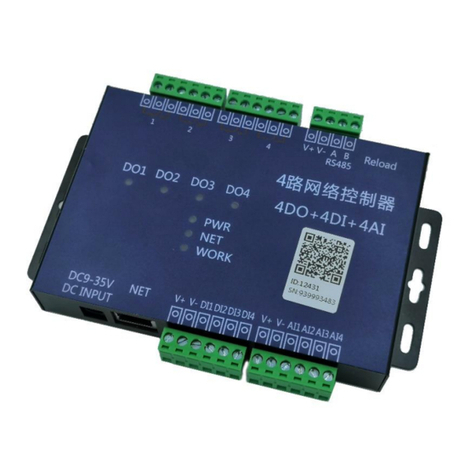
OneFex
OneFex CS-02TR user manual
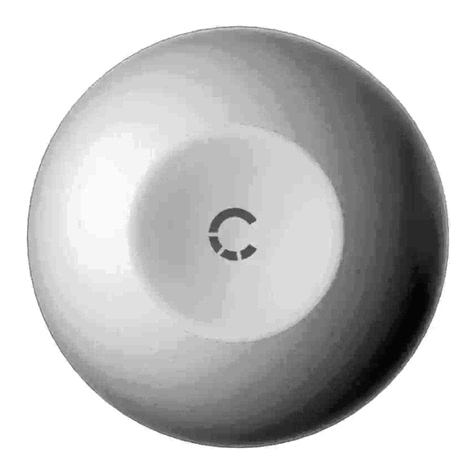
Cygnett
Cygnett Smart Control Button user manual
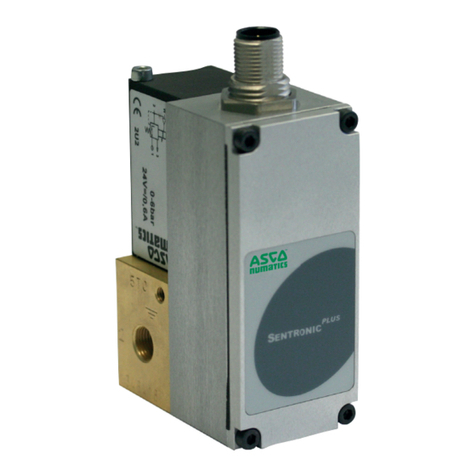
Asco
Asco Sentronic PLUS 614 Series manual
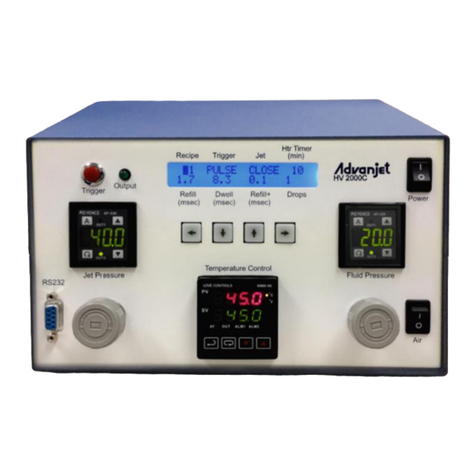
Graco
Graco Advanjet Diaphragm-Jet HV-2000 Setup and operation

Panasonic
Panasonic WVCU161C - SYSTEM CONTROLLER operating instructions

Rockwell
Rockwell Micro830 installation instructions
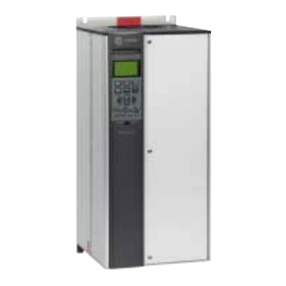
Trane
Trane TR1 6002 Installation and operation manual
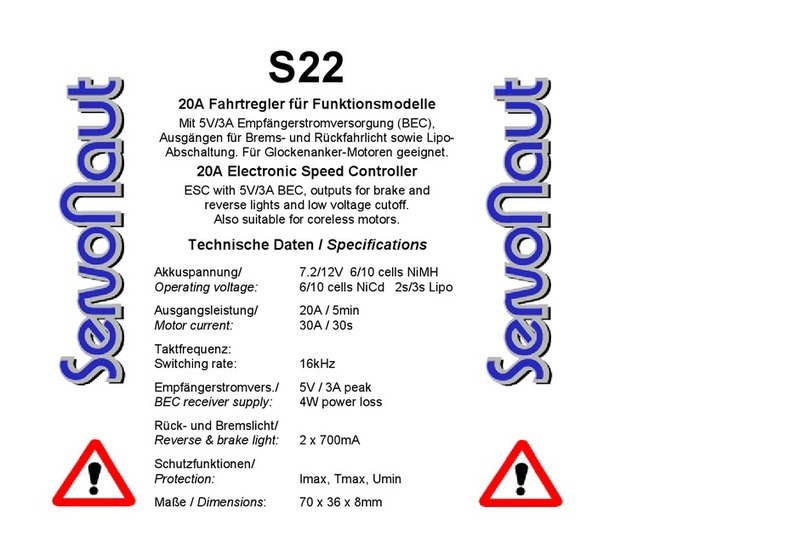
Servonaut
Servonaut S22 manual
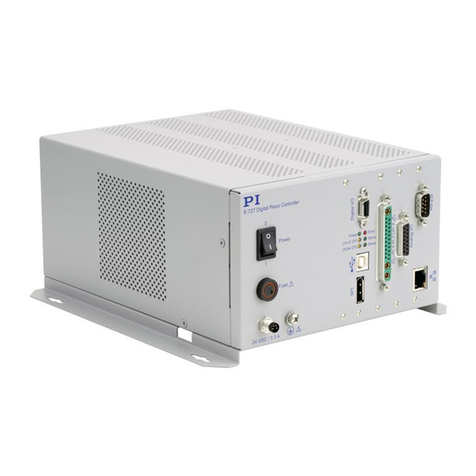
PI
PI E-727 user manual
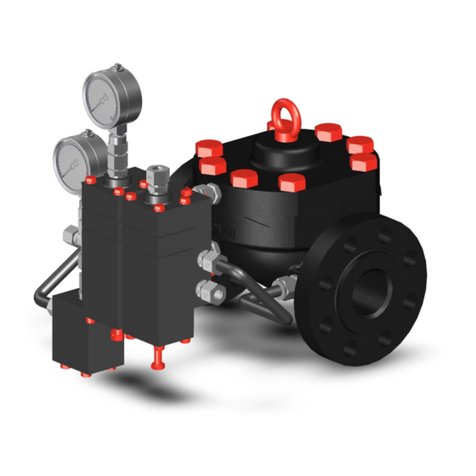
Honeywell
Honeywell HON 5020 User and maintenance manual
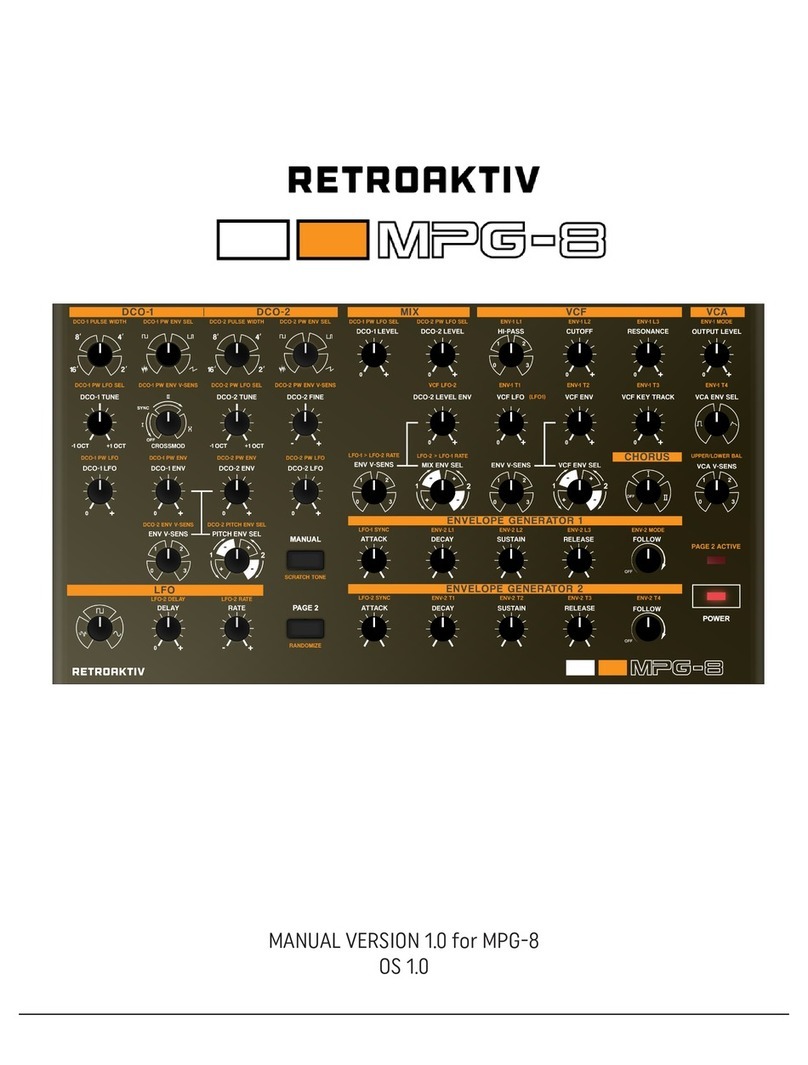
Retroaktiv
Retroaktiv MPG-8 manual
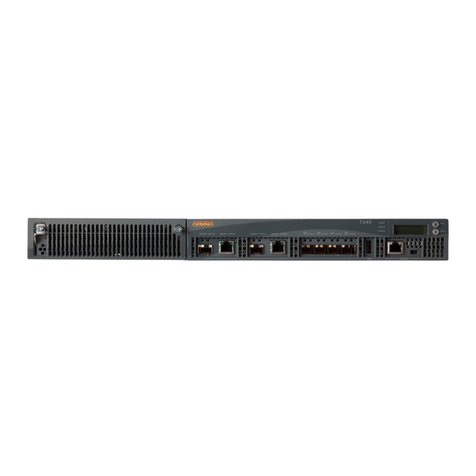
Hewlett Packard Enterprise
Hewlett Packard Enterprise Aruba 7240-US Product End-of-Life Disassembly Instructions
